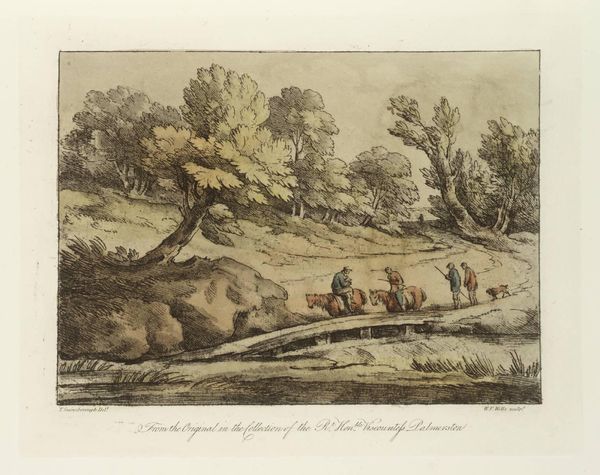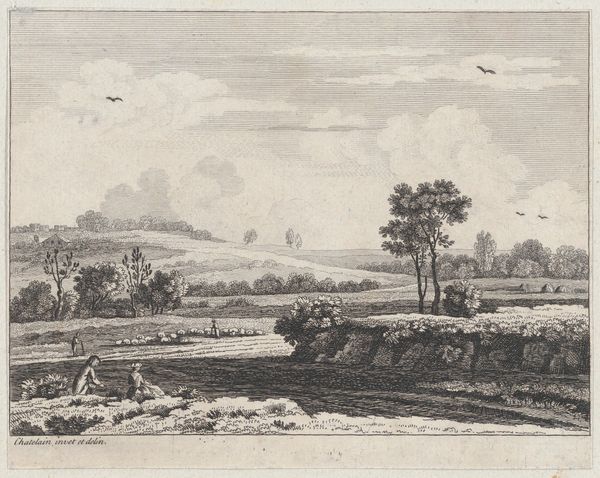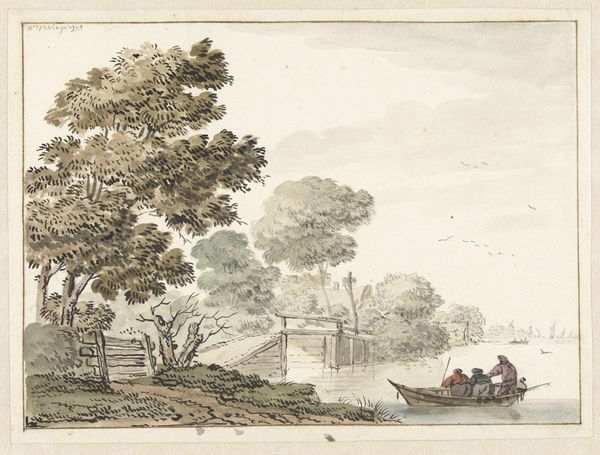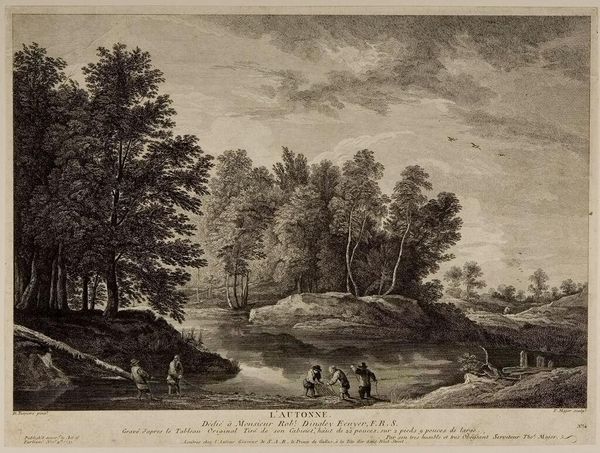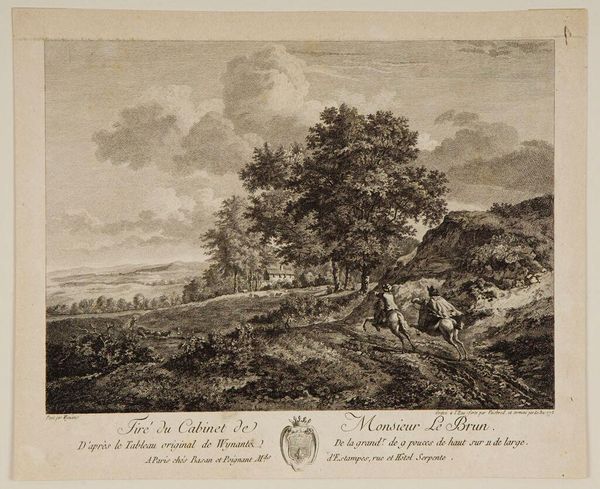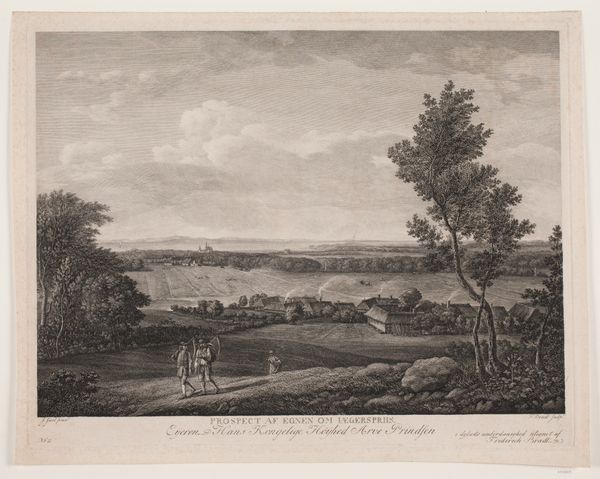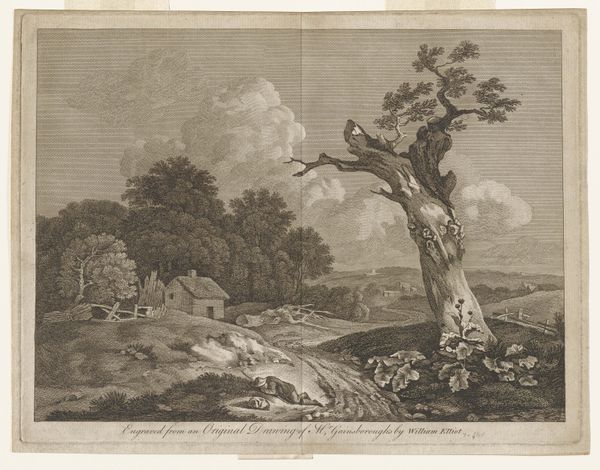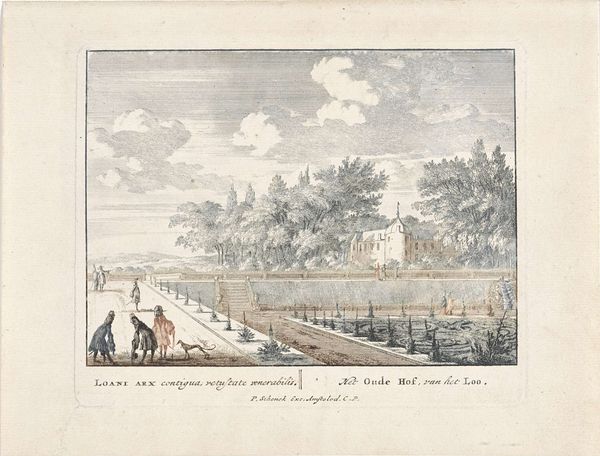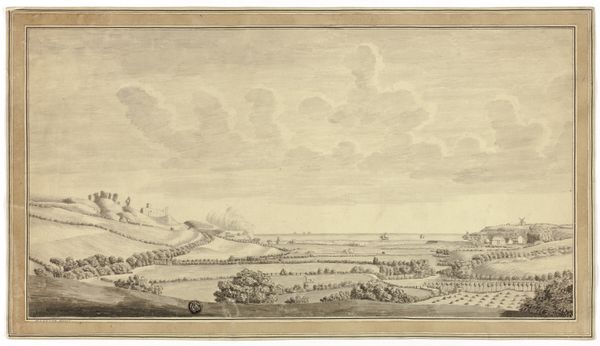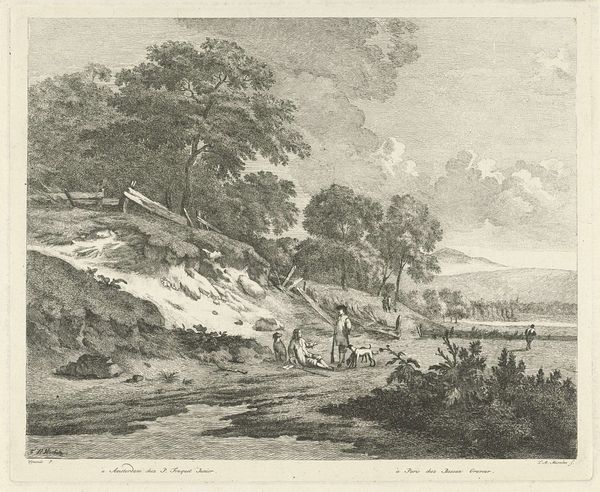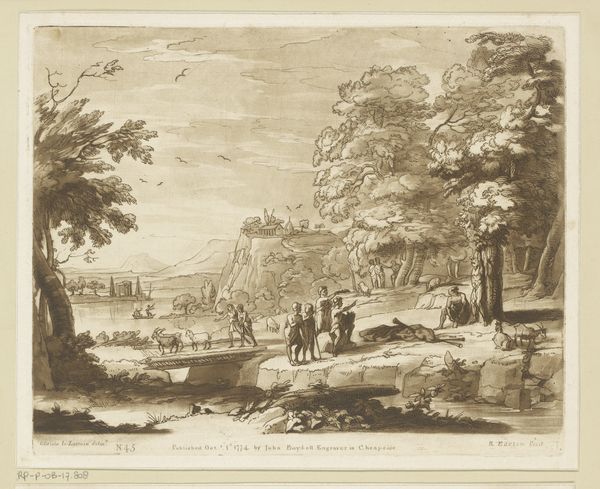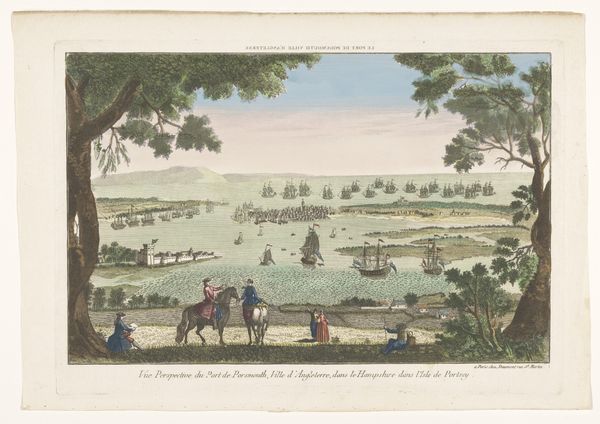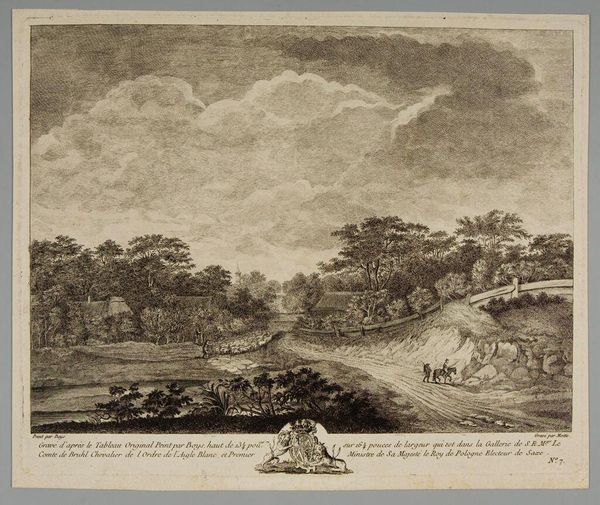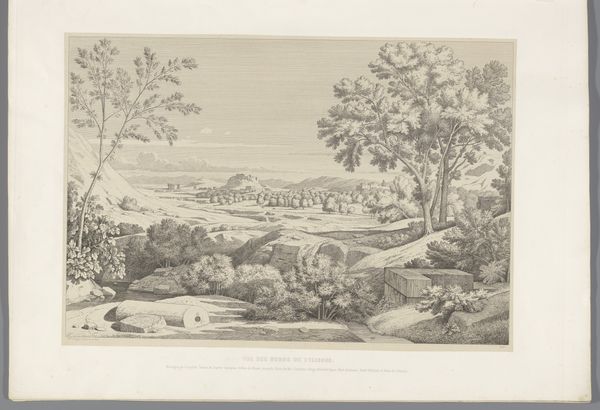
watercolor
#
narrative-art
#
landscape
#
watercolor
#
coloured pencil
#
romanticism
Dimensions: height 335 mm, width 409 mm
Copyright: Rijks Museum: Open Domain
Editor: Here we have Roeland van Eynden’s watercolor, “Dijkdoorbraak te Ochten,” created in 1789. It depicts a dike breach at Ochten. I am struck by the subdued tones and the almost mournful feeling it evokes. What do you see in this piece? Curator: The power of symbols here is quite strong. Water, traditionally a life-giving force, is here a destructive one, unleashed upon the ordered landscape. Notice the lone tree, stripped bare – a symbol, perhaps, of resilience in the face of disaster, but also vulnerability. How does the presence of the figures on the right contribute to your understanding? Editor: I hadn’t really focused on them. They seem almost detached, observing the scene. Their elevated position gives them a sense of safety, but their presence also underscores the human element in the face of natural events. Is it romanticized in your view? Curator: Indeed. Even a scene of devastation can evoke an element of sublime beauty, drawing parallels between human fate and the natural world. The coat-of-arms at the bottom too signifies that this scene has wider ramifications on governance and society. It serves as both a historical record and a meditation on human existence within a larger cosmic order. What do you make of the light in the artwork? Editor: The sky seems ominous. Although the artist is documenting an event, I see an allegory of human fragility against nature. This piece invites reflection beyond its immediate subject. Curator: Precisely. And these paintings are meant to evoke memories of past calamities but also inspire to avoid them. Symbolism makes even landscape painting active agents. Editor: It’s fascinating how seemingly simple landscape can reveal so much! Thanks for helping me unpack all the symbols and cultural elements embedded within it!
Comments
No comments
Be the first to comment and join the conversation on the ultimate creative platform.
